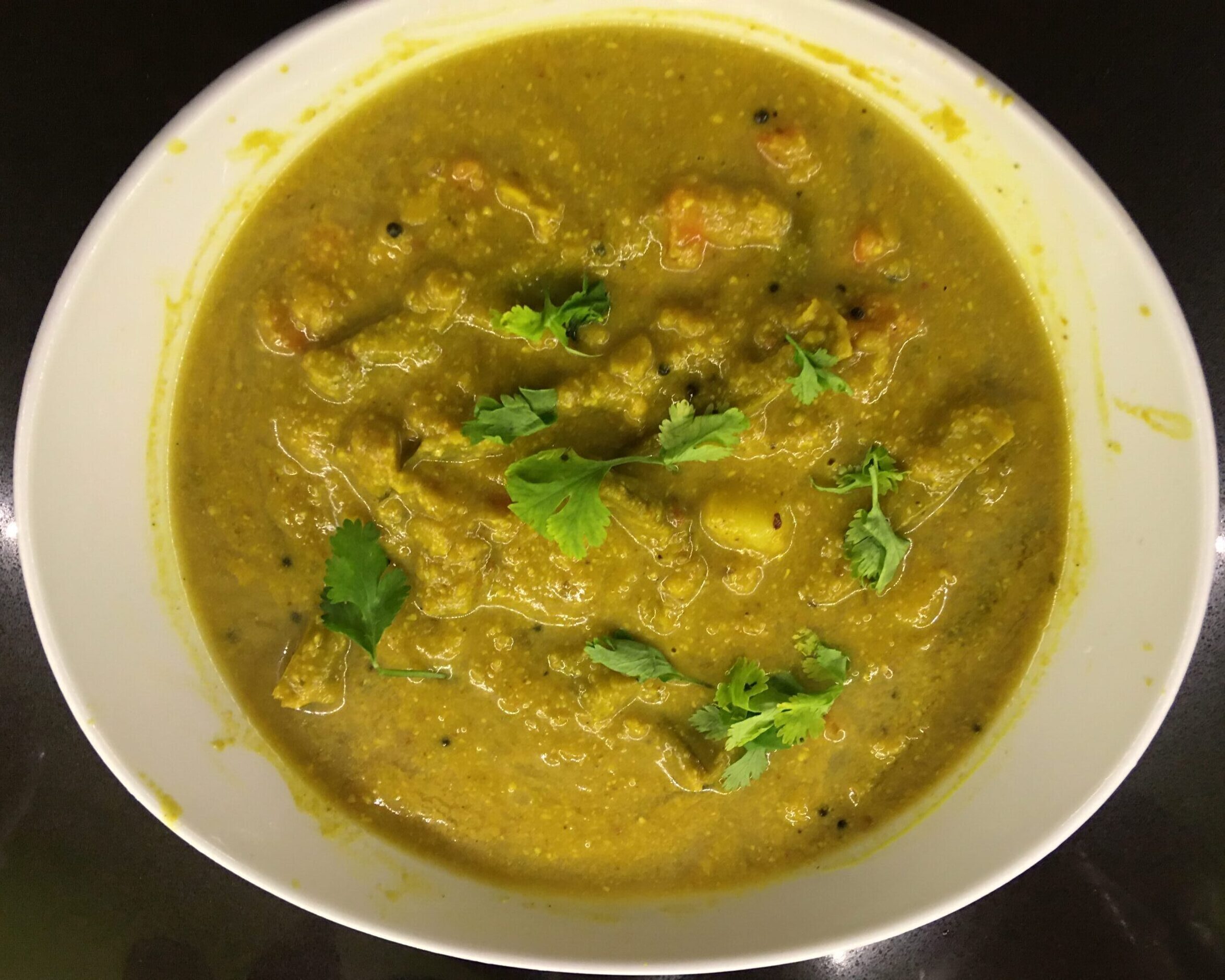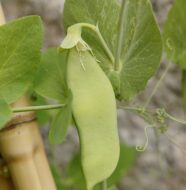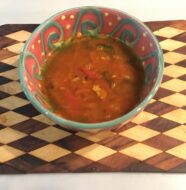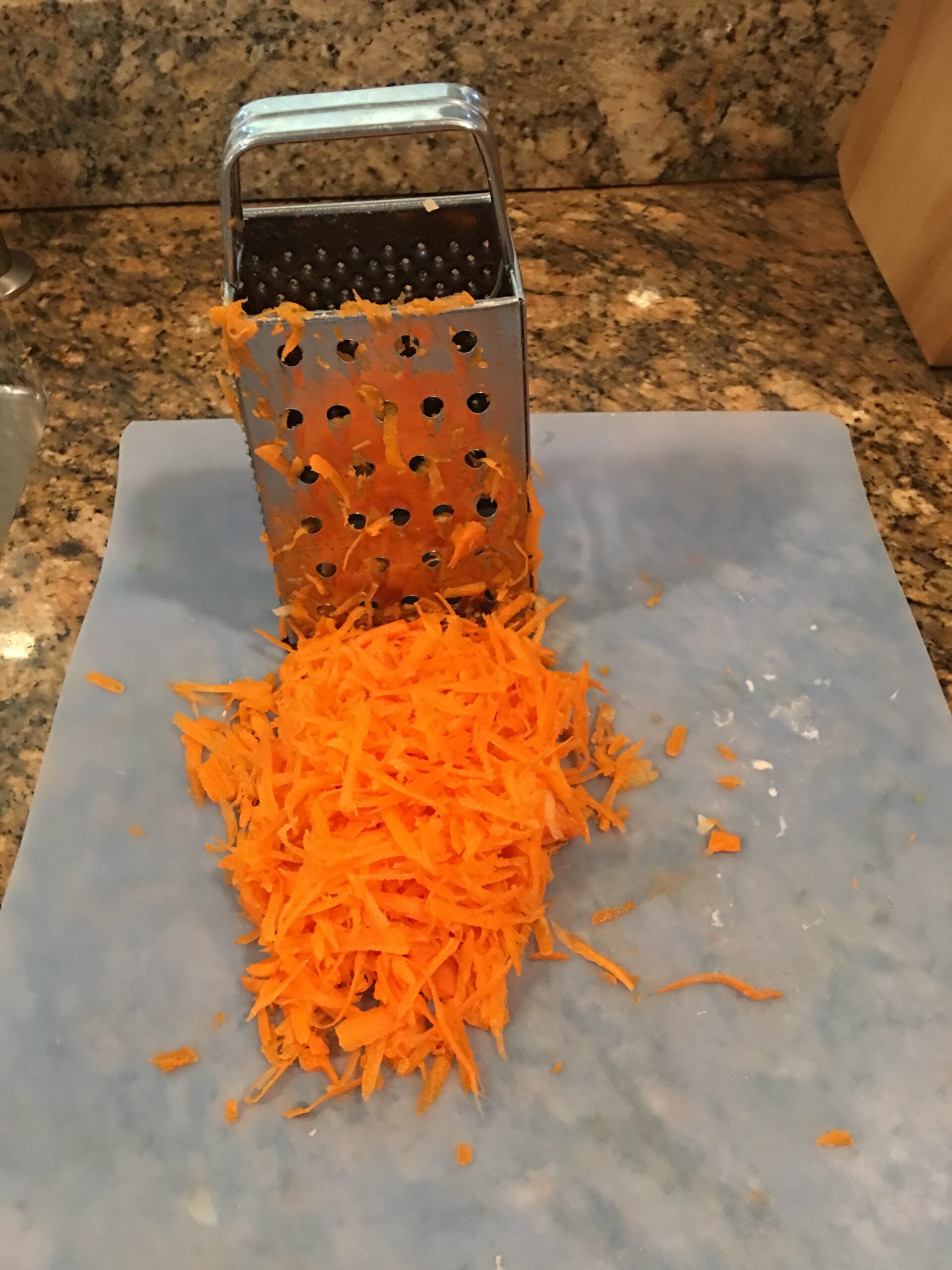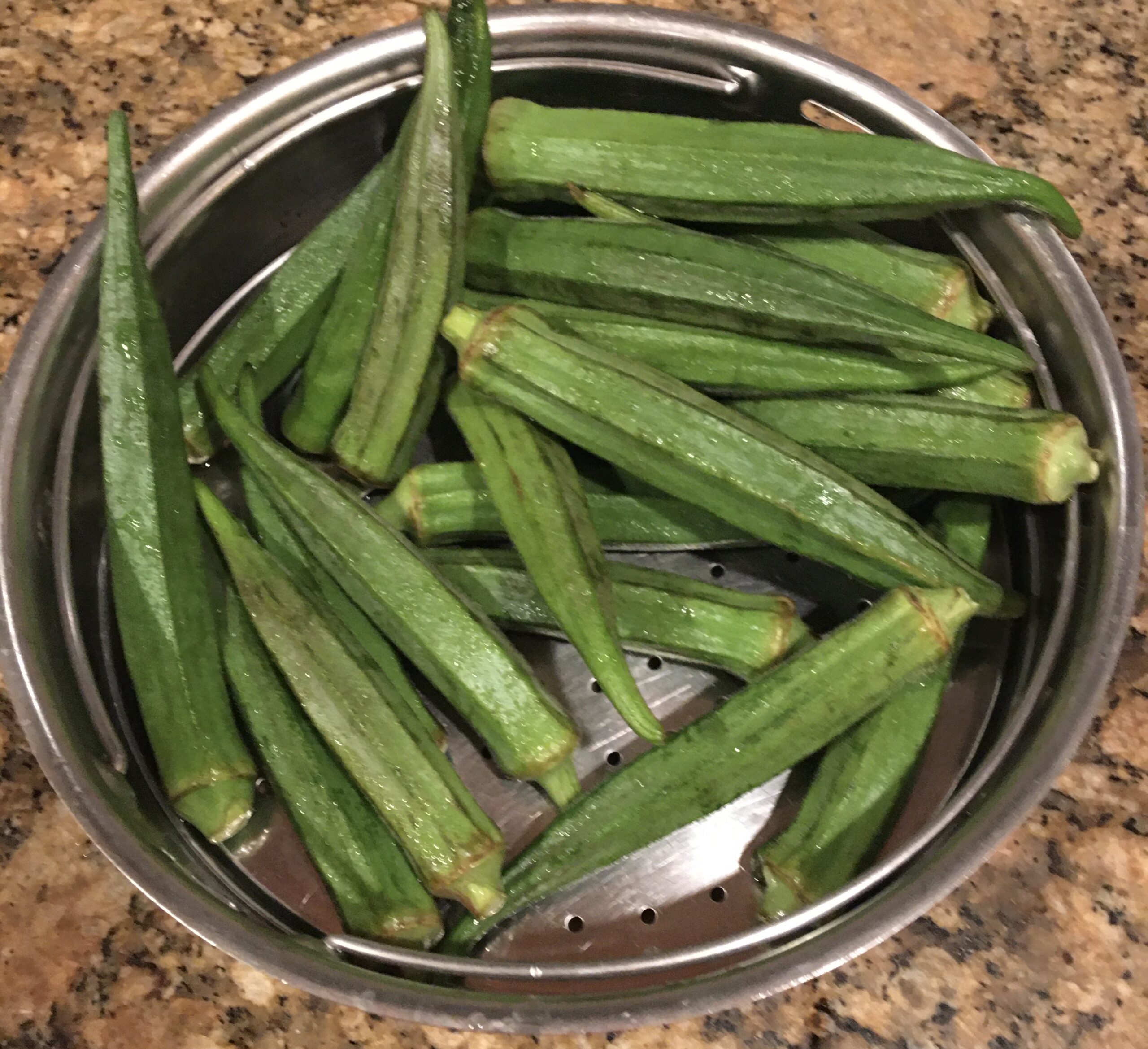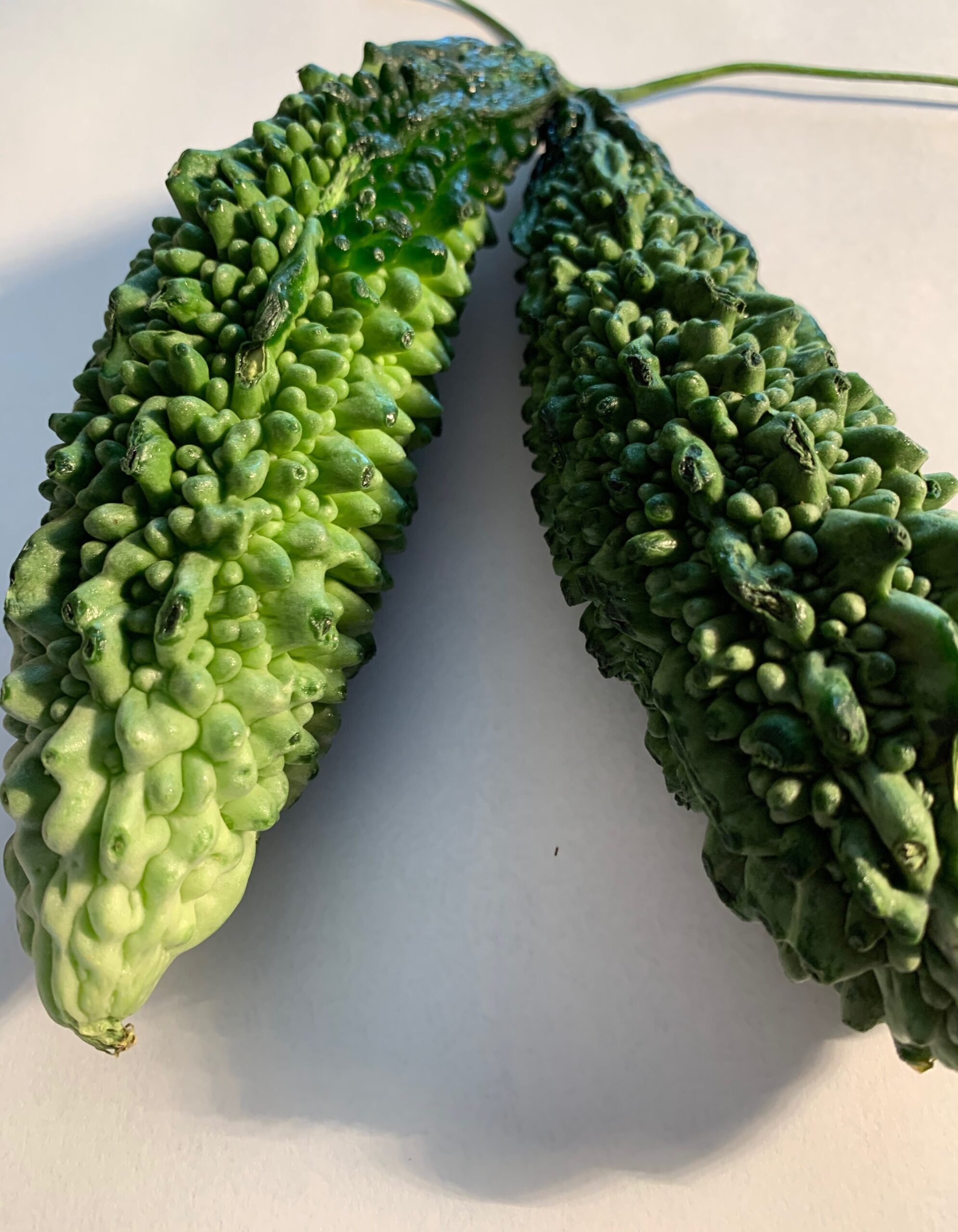Pigeon peas, (Cajanus Cajun– scientific name ) are a popular legume belonging to the Fabaceae family grown in tropical countries and a healthy substitute for meat since they are low in saturated fat, cholesterol & sodium. Sprouted pigeon peas are more easily digestible. Pigeon peas are also known by other names: Red gram, Tuvar/ Toor dal, and Lilva. A good rule of thumb while cooking lentils is to rinse them under cold running water, then combine with 3 cups water, add a few drops of oil and a pinch of Turmeric; bring this to a boil and let lentils simmer for 20-30 minutes, or until soft depending on the softness needed – for Kootu, Sambhar or Rasam.
Sambhar is the South Indian method of preparing lentil soup, which has a balanced taste of tamarind, lentils & spices. It is also served as the first course of a meal at feasts for birthdays, weddings & anniversaries. The traditional vegetables used to cook in the tamarind sauce are Drumsticks, Eggplant, Okra, Baby onions, White ash gourd & Radish. Nowadays Brussels sprouts, Potatoes, Carrots, green bell peppers, tomatoes & zucchini are popular.
Grains like rice, broken wheat, millet (ragi)
Buying & Storage: Choose cleaned dry or whole pigeon peas packed in bins or bags in grocery stores or online markets. Avoid those damaged by insects, broken or mold infected seeds.
To store, place whole dry beans or pigeon pea lentils in stainless or plastic containers away from moisture & heat – in the pantry. Whole seeds can keep for several months if preserved in air-tight bins. Raw green pigeon peas can be kept in the refrigerator and shelled peas can be used as vegetables & frozen. Do not freeze in pods to prevent freezer burns.
History of Pigeon Peas: Origin of pigeon peas is India, where its Archeological finds dates to 14th century BC in Neolithic sites in Karnataka, Maharashtra, Orissa & Kerala (called Thomara Payaru). From India, it traveled to East and W. Africa. Europeans encountered it and named it the Congo pea. The slave trade brought it to North America in the 17th century.
History of Sambhar: The genesis of sambhar remains disputed. The Maratha legend holds sambhar to have taken birth in the royal kitchen of Thanjavur Marathas where the king’s court named the novel recipe after their guest, the Maratha emperor Sambhaji. Other sources link Sambhar’s origin to Karnataka and Tamil nadu.
Origin of Sambar: Sambar originated in the kitchen of Shahaji Bhonsle (1684 to 1711 CE), son of Ekoji, founder of the Maratha rule of Thanjavur and Chatrapati Shivaji’s step brother. Shahaji’s contribution was to architecture and literature, especially in Telugu, but he enjoyed dabbling in cooking too. On one occasion, he wanted to eat Aamti daal (Maharashtrian daal) which has kokum as one of its main ingredients. Kokum is the plant belonging to the mangosteen family from the western ghats coastline. Its outer cover is dried and powdered and used as a slightly sour spice in Maharashtrian cooking. But kokum was out of supp;y at that time.
We don’t know if it was the cooks or Shahaji himself who experimented by substituting it with tamarind. But the combination of lentils, vegetables, spices and tamarind was a great success and was first served when Shahajis cousin Sambha or Sambhaji (1656-1689), son of Chatrapati Shivaji visited Thanjavur. It was named “Sambhache ahar”(Sambha’s food or sambhar and became a royal dish at the Thanjavur palace. Thus it was invented in Thanjavur , not in Maharashtra. This story was narrated by Pandit Bhim Rao, the late Marathi pandit of the Saraswathi Mahal library, who referred to a manuscript written in “Modi script” in which this was recorded.
Source Library – Thanjavur University
Nutrition facts of Pigeon peas ( Cajanus Cajun) 100g raw
| Energy.. 343kcal (17%) | Sodium (Na)17 mg (1%) | Folates …456 mcg ( 114 %) |
| Carb. ..62.8g (48%) | Potassium( K )1392 mg (30%) | Niacin.. .2.96 mg (18.5 %) |
| Protein ..21.7g (39%) | Calcium (Ca )mg 05 (13%) | Pyridoxine .0.28mg (22%) |
| Fiber.. 15g (39%) | Copper (Cu) mcg 1.06 (117 %) | Riboflavin 0.19 (14 %) |
| Total Fat 1.5 g (7.5%) | Iron (Fe) mg 5.2 (65 %) | Thiamin 0.64 mg (54%) |
| Cholesterol 0mg (0%) | Magnesium (Mg) mg183 (46%) | Pantothenic acid 28.6% |
| Selenium (Se) mcg 8.2 (15%) | Manganese (Mn) mg 1.8 (78%) | Vitamin C mg 0 (0%) |
| Zinc (Zn) mg 7 (25%) | Phosphorous (P) mg 367 (52%) | Vitamin A IU 5 (0%) |
(Source: USDA National Nutrient database) https://www.nutrition-and-you.com/pigeon-peas.html
Pigeon Pea Recipes
Pigeon Pea Sambhar
Pigeon Pea Rasam
Health Benefits of Pigeon peas
- Pigeon peas Boost energy: the presence of B vitamins niacin and riboflavin promote the metabolism of carbohydrates and prevent fat storage, thus boosting energy levels without packing any pounds.
- Pigeon peas maintain heart health: The combination of potassium, fiber & low levels of cholesterol make pigeon peas a great choice for heart health maintenance. Potassium reduces strain on the heart by reducing blood pressure; dietary fiber can help balance cholesterol levels and prevent Athelo Sclerosis. By delivering nutrients without unbalancing cholesterol with saturated fat, your heart will thank you.
- Pigeon peas improve digestion: being a rich source of dietary fiber that can bulk up the stools and promote more regular bowel movements & reduce constipation, bloating, cramping & diarrhea. Fiber can also improve the absorbancy rate of the gut.
- Pigeon peas prevent anemia: Folate (456mcg/cup) plays a dual role within the body of reproducing new red blood cells and protecting babies from birth defects. Raw green pigeon peas sprinkled on salads can metabolize food & provide twice the folate compared to cooked ones. 100g raw peas provide 114% (76% for pregnant women) DV, (daily value)
- Pigeon peas regulate blood pressure: with key mineral potassium which is a vasodilator with its capacity to reduce the constriction of blood vessels thus lowering blood pressure.
- Pigeon peas stimulate growth with high protein content(11g/ cup) which is the building block of cells, tissues, muscles & bones. It also plays an important role in the healing and regeneration of cells in the body
- Pigeon peas help with weight loss: Pigeon peas are moderate in calories and very low in saturated fats and cholesterol. The dietary fiber and nutrients keep you feel full longer, increase the rate of metabolism & prevent weight gain. Most of its nutrients convert to usable energy than storable fat.
Spice & Herb Powers
- Turmeric powder: research has shown that compound aromatic turmerone can increase stem cell growth in the brain. This is believed to improve spatial and non-spatial memory as well as support regeneration in neurological disease.
- Sambhar powder: the basic spices in sambhar powder are coriander seeds, fenugreek seeds, turmeric, red chilies, chickpea lentils, and curry leaves which are good sources of fiber that improve digestion.
- Coriander seeds: lowers cholesterol reduces LDL cholesterol and promotes HDL cholesterol; minerals copper, zinc, iron increase red blood cell growth to improve heart health. They also improve metabolism, produce digestive hormones and stimulate a better liver function.,
- Fenugreek seeds regulate blood sugar: with trigonelline that may help prevent and treat diabetes. The seeds enhance milk production in lactating mothers.
- Chickpea lentils: contain polyphenols that fight against harmful agents in the body.
- Red chili: benefits the digestive tract with capsaicin which acts as an anti-irritant by reducing the acidity that causes ulcers. It also mitigates migraines.
- Asafetida powder may lower blood pressure since it is packed with coumarin, a compound that aids in blood flow and prevents the formation of blood clots.
- Coconut: boosts immunity having anti-viral, anti-fungal, anti-bacterial & anti-parasitic properties. It also helps treat abdominal fats (200g serving of coconut consumption may significantly reduce BMI and waist circumference in 12 weeks)
- Mustard seeds: with a high source of magnesium helps to reduce the severity of asthma attacks, symptoms of rheumatoid arthritis & lower blood pressure. Selenium provides anti-inflammatory benefits.
- Cilantro leaves:
contains chemicals that help food stay fresh longer. 1/4 cup cilantro contains 5% of DV of vitamin A. it also contains the highest level of carotenoids beta carotene, lutein & zeaxanthin known for their antioxidant properties. - Curry leaves: can help eliminate bacteria with carbazole alkaloid compounds which are anti-cancer and anti-inflammatory as well. Linalool another compound present (that gives the special scent) have properties that kill bacteria.
Method for making Tuvar lentils Sambhar
Three methods of making sambhar are currently prevalent. Tamil Nadu style where the coriander, fenugreek seeds, chickpea lentils & red chilies are powdered together into sambhar powder and added to the tamarind sauce while cooking the vegetables. Kerala style where the same spices are fried in oil and ground with coconut first and then added to tamarind sauce with cooked vegetables. Insta pot style where all the raw ingredients with spices and water are placed in the pot and cooked together under pressure that produces a Sambhar sauce that is homogeneous.
- Method 1 TamilNadu style
- Cook lentils in a saucepan with turmeric, 3 cups water & some oil on the
stove . ( 20 min.) - Alternately cook lentils in a pressure cooker or microwave. (15 min.)
- While the lentils cook, snip the ends & cut vegetables into cubes – drumsticks in 2″ sticks. (5 min.)
- Dissolve tamarind paste in 2 cups of water or soak tamarind pods in water; extract the pulp.
- Add vegetables and Sambhar spices; cook in the microwave or stove. (8-10 min.)
- Check to see if the drumsticks, okra or eggplant split open when squished.
- Puree lentils; add to tamarind sauce; bring Sambhar sauce to a boil & simmer. (2 min.)
- Method 2 Kerala style:
- Cook lentils in pressure cooker or stove.
- While the vegetables are cooking:
- Heat 1 tsp. oil in a small frying pan; fry sambhar spices until coriander seeds turn brown; add coconut and stir. (2 min.)
- Add coconut, fried spices + water & grind in a blender to a smooth paste. (2 min.)
- Puree lentils; add to tamarind sauce; bring sauce to a boil. (2 min.)
- Pour ground coconut mixture into sambhar sauce and simmer. (2 min.)
- Method 3 Insta pot style:
- Add Tuvar lentils, cut vegetables, tamarind pulp, salt, turmeric powder & Sambhar powder with 4 cups water. Close lid and cook for 20 min. to bring the pressure up. Remove from heat and allow to cool. (10 min.) Add 2 tbsp. ground coconut flakes for a more alkaline sauce that neutralizes the tartaric acid in the tamarind sauce.
- Method 4 Quick Sambhar:
- Cook vegetables in 2 cups water, salt and turmeric; add Sambhar paste; embellish with extra tamarind paste and coconut powder.
- Sizzling mustard seeds (Porichu kottal)
Heat 1/2 tsp. oil in a frying pan; add mustard seeds; cover with the lid.When they splutter pour on sambhar sauce. (sizzling sound) (2 min.)Garnish with washed and chopped cilantro or curry leaves.
Serve (Murungaikai /Vendaikai / Katharikai ) Sambhar with Quinoa, Brown Rice, Rice noodles (Sevai), Idli, Dosai, Vadai or Upma.
TIPS
Time saver: Use frozen vegetables like Brussels sprouts, Carrots or Baby onions
Variation : Use carrots, onions, potato, or radish
Thicken the sambhar sauce with 1 tsp. rice flour dissolved in 1/2 cup water and boil together
Caution: when cooking lentils in microwave pause every 5 min, to prevent spilling
Saute the onions & vegetables in 1 tbsp. oil before adding water and tamarind paste this helps to absorb tanginess
To make Fresh sambhar powder: 1 tbsp. coriander seeds, 1 tbsp. chickpea lentils,1/2 tsp. fenugreek seeds, 1 red chili, 1 tsp turmeric & few strands curry leaves; Dry roast spices in a frying pan and grind in a blender; mix turmeric at the end
.

